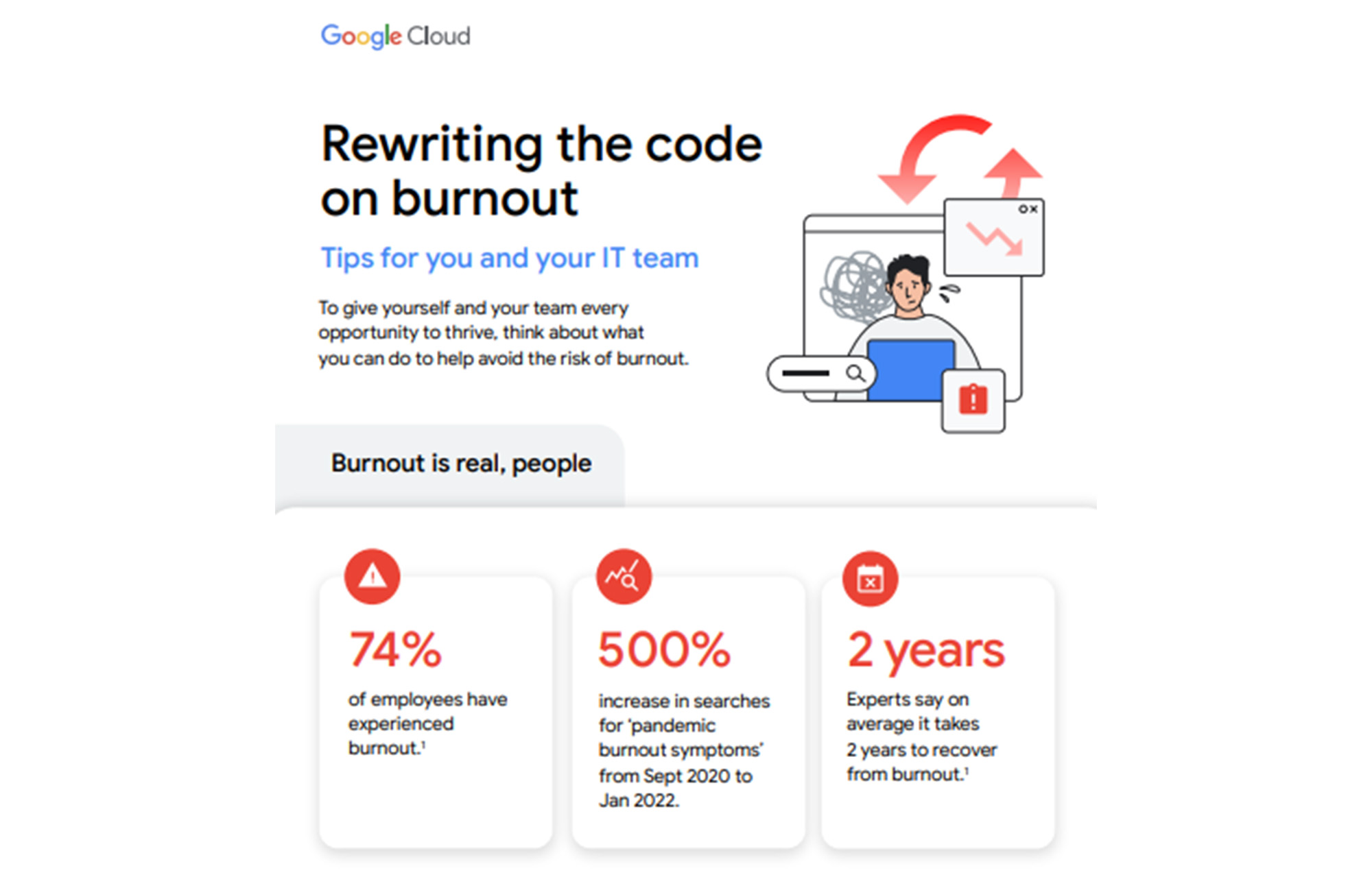How to build an optimized infrastructure without burning out your IT team
Tom Nikl
Senior Product Marketing Manager, Cloud Migration
IT infrastructure is essential to the success of any organization. Unfortunately burnout is a very real threat to many IT teams’ wellbeing and productivity, compromising their ability to deliver and maintain that infrastructure. We’ve seen that utilizing the public cloud can reduce burnout, but many IT teams still aren’t sure how to make that switch. That’s why we published a new ebook where we follow a day in the life of On-Prem Pete and Cloud Carrie, two infrastructure managers whose workdays play out very differently. By following their paths, it quickly becomes clear how switching to cloud can make life much easier for both IT staff and developers.
As you may know from personal experience, IT and infrastructure teams are often under a lot of stress, some of which might be exacerbated by non-ideal IT landscapes in on-prem data centers. A few of the most common reasons that IT teams may feel stressed include the ever-changing nature of technology, the push for integrating new AI solutions, the need for staff to be constantly available, the responsibility to keep data safe, the pressure to perform, and work-life imbalance.
All of these pressures can take a toll on IT teams, sometimes leading to burnout — a state of physical and emotional exhaustion that can cause a loss of motivation or efficiency. In fact, as you can see in the infographic below, 74% of employees have experienced burnout at some point in their careers, and there was a 500% increase in searches for ‘pandemic burnout symptoms’ from 2020 to 2022. Clearly, burnout is a very real issue.
Making this even more challenging? A lot of people don’t even know when they’re burned out — especially since burnout symptoms can vary from person to person. However, there are some common symptoms that you should look out for:
Exhaustion. This is one of the most common symptoms of burnout. You feel tired all the time, even when you’ve had a good night's sleep. You may also feel like you are running on empty.
Cynicism. With this common symptom, you may start to feel like nothing you do makes a difference, or that your work is pointless.
Lost motivation. You may start to feel like you don't care about your job anymore, or that you’re just going through the motions.
What’s worse is that in addition to the human impact, burnout can also impact the business. That’s why businesses should take avoiding burnout among employees seriously! Thankfully, there are many things you can do to prevent burnout, with some of the most important being:
Setting boundaries. It’s important to establish boundaries between your work life and your personal life. This means not checking work emails or messages outside of work hours. It also means taking time for yourself, even when you are busy, and having clear conversations with your management teams about what is and isn’t realistic.
Taking breaks throughout the day. This will help you from feeling overwhelmed. You also need to take vacations and use your sick days.
Talking to someone. It’s important to talk to someone about how you are feeling. This could be a friend, family member, therapist, or counselor. Talking to someone can help you feel better and get the support you need.
Making changes. If you are feeling burned out, it may be time to make some changes. This could include changing your job, your work environment, or your lifestyle.
Understanding burnout — especially its symptoms — is the first step you can take to avoiding it. The second step you can take is finding ways to accomplish your work goals as optimally and efficiently as possible. We hope our free ebook and infographic can help you accomplish all of your IT goals — while maintaining your wellbeing and productivity along the way.





